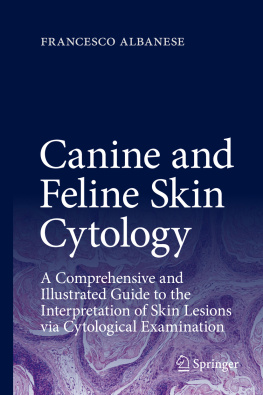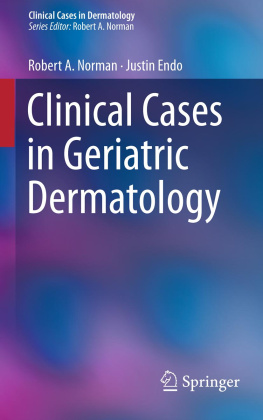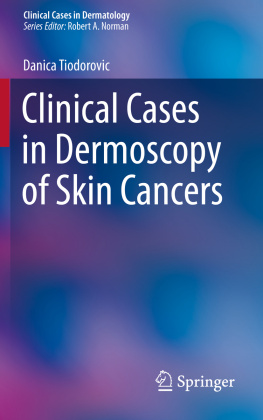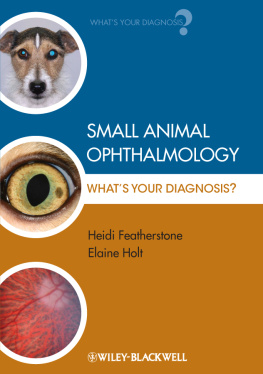Edition first published 2010
2010 Terry W. Campbell and Krystan R. Grant
Blackwell Publishing was acquired by John Wiley & Sons in February 2007. Blackwells publishing program has been merged with Wileys global Scientific, Technical, and Medical business to form Wiley-Blackwell.
Editorial office
2121 State Avenue, Ames, Iowa 50014-8300, USA
For details of our global editorial offices, for customer services, and for information abouthowto applyfor permission to reuse the copyrightmaterial in this book, please see our website at www.wiley.com/wiley-blackwell.
Authorization to photocopy items for internal or personal use, or the internal or personal use of specific clients, is granted by Blackwell Publishing, provided that the base fee is paid directly to the CopyrightClearance Center, 222 Rosewood Drive, Danvers, MA 01923. For those organizations that have been granted a photocopy license by CCC, a separate system of payments has been arranged. The fee codes for users of the Transactional Reporting Service are ISBN-13: 978-0-8138-1661-6/2010.
Designations used by companies to distinguish their products are often claimed as trademarks. All brand names and productnames used in this book are trade names, service marks, trademarks or registered trademarks of their respective owners. The publisher is not associated with any product or vendor mentioned in this book. This publication is designed to provide accurate and authoritative information in regard to the subject matter covered. It is sold on the understanding that the publisher is not engaged in rendering professional services. If professional advice or other expert assistance is required, the services of a competent professional should be sought.
Library of Congress Cataloging-in-Publication Data
Campbell,TerryW.,1949
Clinical cases in avian and exotic animal hematology and cytology / Terry W. Campbell and Krystan R. Grant.
p.; cm.
Includes bibliographical references and index.
Summary: Clinical Cases in Avian and Exotic Animal Hematology and Cytology demonstrates howto use hemic cytology and cytodiagnosis as partof the assessment of an exotic animal patient. The clinical case presentation uses a hands-on, practical approach to facilitate learning, teaching, and comprehension. Well-illustrated throughout, each case presents the signalment, history, and physical exam findings. It then moves on to interpretive discussion and summarizes how to use the techniques in clinical practice. This book serves as a helpful guide for exotics veterinarians, zoo and aquarium veterinarians, and veterinary hematologists-Provided by publisher.
ISBN 978-0-8138-1661-6 (hardback : alk. paper) 1. Veterinary hematology-Case studies. 2. Veterinary cytology-Case studies.
3. Birds-Diseases-Diagnosis-Case studies. 4. Exotic animals-Diseases-Diagnosis-Case studies. I. Grant, Krystan R. II. Title.
[DNLM: 1. Animal Diseases-diagnosis-Case Reports. 2. Animal Diseases-therapy-Case Reports. 3. Cytodiagnosis-veterinary-Case Reports.
4. Hematologic Tests-veterinary-Case Reports. SF 771 C174c 2010]
SF769.5.C36 2010
636.089'615-dc22
2009045135
A catalog record for this book is available from the U.S. Library ofCongress.
Disclaimer
The publisher and the author make no representations or warranties with respect to the accuracy or completeness of the contents of this work and specifically disclaim all warranties, including without limitation warranties of fitness for a particular purpose. No warranty may be created or extended by sales or promotional materials. The advice and strategies contained here in may not be suitable for every situation. This work is sold with the understanding that the publisher is not engaged in rendering legal, accounting, or other professional services. If professional assistance is required, the services of a competent professional person should be sought. Neither the publisher nor the author shall be liable for damages arising here from. The fact that an organization or Website is referred to in this work as acitation and/or apotential source of further information does not mean that the author or the publisher endorses the information the organization or Website may provide or recommendations it may make. Further, readers should be aware that Internet Websites listed in this work may have changed or disappeared between when this work was written and when it is read.
1 2010
PREFACE
This book provides representative examples of hematology and cytology cases encountered in exotic animal practice. Cases in the book were selected based on the important role of cytodiagnosis or hematology in the medical management of the exotic animal patient. The cases in the book offer a variety of hematologic and cytodiagnostic interpretations.
Cases representing animals with anemia include blood loss, hemolytic, iron deficiency, Heinz body, and nonregenerative anemia. An example of polycythemia as well as the effects of lead toxicosis on the hemogram is provided. A variety of abnormal leukograms, such as leukocytosis, leukopenia, leukemia, and stress responses, are represented in the text. Representations of normal and abnormal hemic cytologies are provided. These include normal hemic cells, toxic neutrophils and heterophils, left shifts, and leukemia. Blood parasites, such as Leukocytozoon, Hemoproteus, Plasmodium,and Hemogregarine, and bacteremia are also represented.
Example cases of the basic cytodiagnosis interpretations are also represented. These include normal cytology, inflammation, hyperplasia or benign neoplasia, and malignant neoplasia. Inflammatory lesions are represented by neutrophilic or heterophilic, mixed cell, macrophagic, and eosinophilic inflammation. Along with these inflammatory lesions, a specific etiologic agent, such as bacterial, mycobacterial, fungal, viral, parasitic, or foreign body, is represented. Tissue hy-perplasia or benign neoplasia is represented by epithelial hyperplasia, papilloma, adenoma, lipoma, mast cell tumor, and chondroma. Representations of malignant neoplasia include carcinomas, such as undifferentiated carcinoma, adenocarcinoma, and squamous cell carcinoma; sarcomas, such as undifferentiated soft tissue sarcoma, liposarcoma, hemangiosarcoma, and malignant melanoma; and discrete cell neoplasms, such lym-phoma, histiocytoma, and mast cell tumor.
Effusions are also represented. These include tran-sudate, modified transudate, exudate, and hemorrhagic effusion. Examples of specific fluid analysis include synovial fluid, such as articular gout and synovial cysts, and a salivary mucocele.
Guideline for Using the Clinical Cases Presented in this Book
This book is offered as a companion to TW Campbell and CK Ellis, Avian and Exotic Animal Hematol-ogy and Cytology, Ames, Iowa, Blackwell Publishing, 2007, and is designed to assess one's level of knowledge in the use of hematology and cytology in the diagnosis of health disorders involving exotic animal patients. The clinical cases presented were obtained from animal medical records, and each was chosen for its relevant hematology or cytology data. Although not a focus of the book, other clinical data, such as serum or plasma biochemistry profiles (presented in conventional units), imaging, and histology, are also presented with some case studies. Veterinarians, veterinary students, and veterinary technicians in clinical practice will find this additional information useful as an example of how each case was managed medically or surgically. Veterinary clinical pathologists and laboratory technicians will also find this added information beneficial in providing a complete overview of each case. Often the pathologist and laboratory technicians are exposed to only a small part of the clinical cases that they help to manage. Overall, this book is designed to test one's skills in the interpretation of laboratory data and cytology with the added benefit of providing self-assessment material for all aspects in the management of the exotic animal patient.










